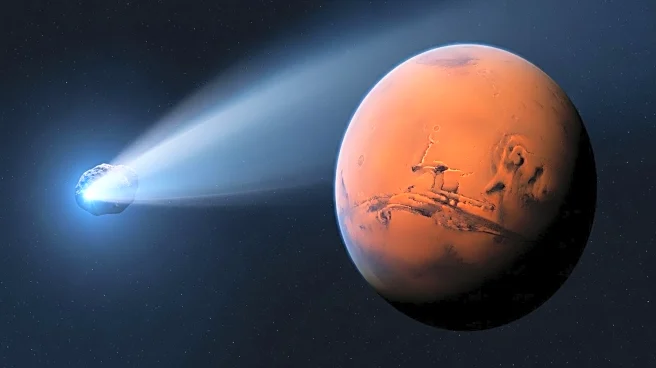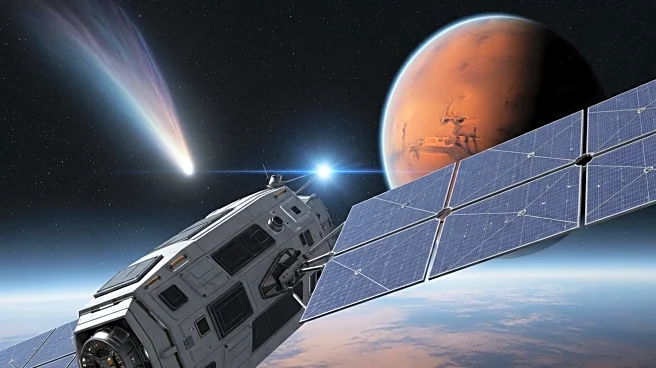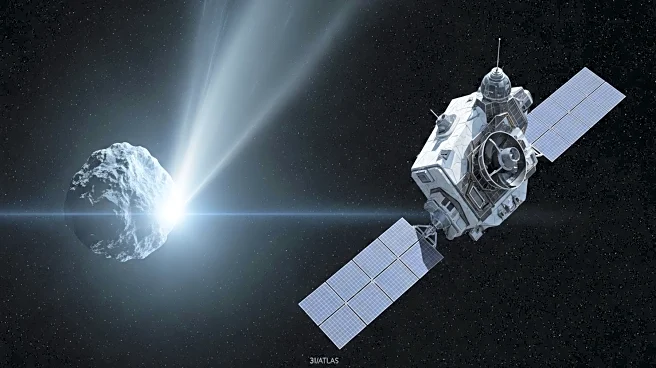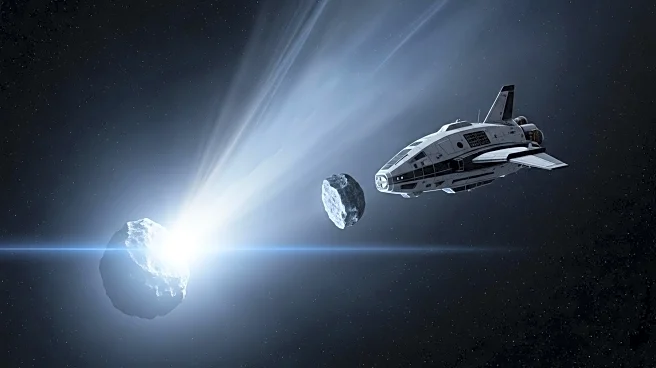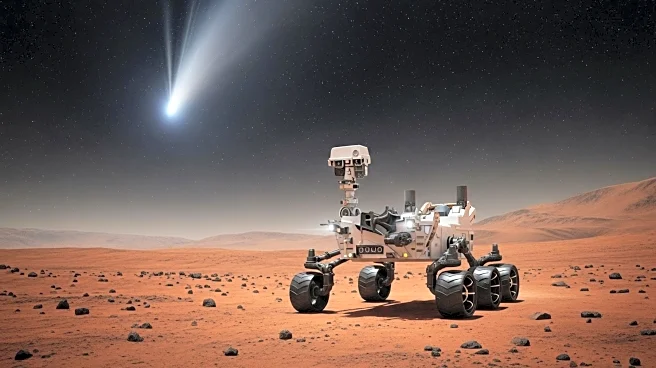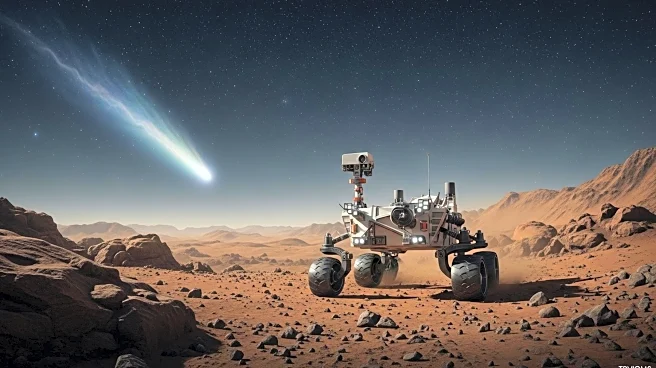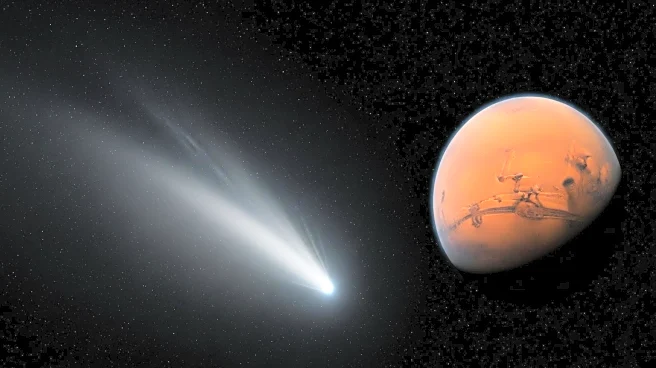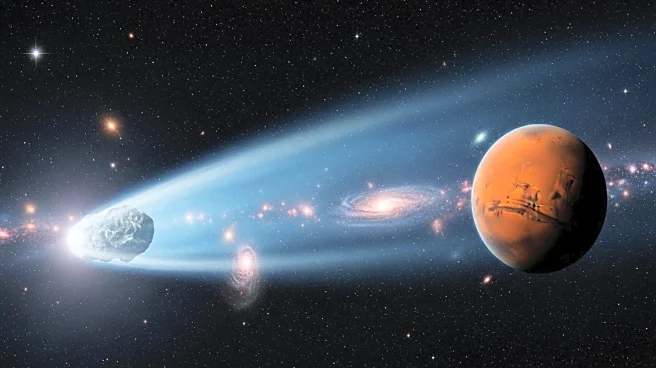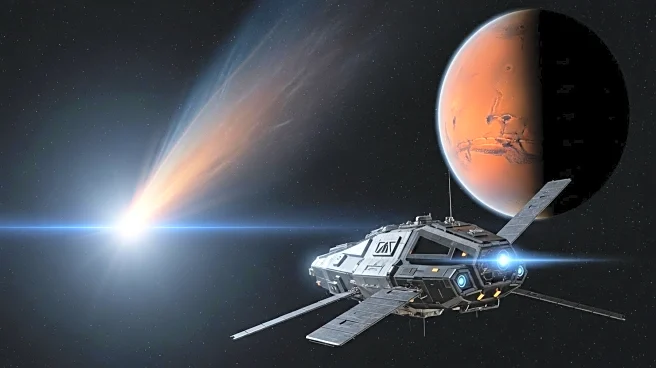What's Happening?
The European Space Agency's Mars orbiters, ExoMars and Mars Express, have captured rare images of the interstellar comet 3I/ATLAS as it passed by Mars. The comet, one of only three interstellar objects recorded entering our solar system, was first spotted on July 1. The images were taken as the comet approached Mars on October 3, despite the challenges posed by its dimness compared to the bright Martian surface. The comet's nucleus, composed of carbon dioxide gas and water ice, is surrounded by a coma formed by gas and dust released due to the sun's heat and radiation. Scientists estimate the comet's age to be 3 billion years older than the solar system, making it potentially the oldest comet ever observed.
Why It's Important?
The observation of 3I/ATLAS provides valuable data for understanding the composition and behavior of interstellar comets. As a rare interstellar object, it offers insights into the materials and processes that existed in the early universe. The data collected by ESA's orbiters will help scientists analyze the comet's structure and composition, contributing to the broader understanding of cometary science and the dynamics of interstellar objects. This research enhances our knowledge of the solar system's interactions with objects from beyond its boundaries, potentially informing future studies and missions.
What's Next?
In November, ESA astronomers plan to observe 3I/ATLAS using the Jupiter Icy Moons Explorer (Juice) as it makes its closest approach to the sun. Scientists will continue to analyze data from ESA's orbiters to determine the comet's exact composition and characteristics. The ongoing study of 3I/ATLAS will provide further insights into its origins and behavior, contributing to the understanding of interstellar comets and their role in the solar system.
Beyond the Headlines
The study of interstellar comets like 3I/ATLAS highlights the importance of international collaboration in space exploration. The ability to capture and analyze data from such distant objects requires advanced technology and cooperation among space agencies. This research underscores the significance of space missions in expanding our knowledge of the universe and the need for continued investment in scientific exploration.

